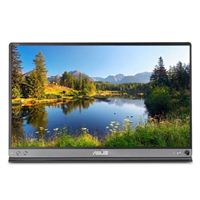- Joined
- Aug 19, 2017
- Messages
- 3,233 (1.12/day)
Acer has launched the latest addition to its portable monitor lineup -the PM1 portable monitor. The PM1 features a 15.6-inch IPS panel with 1920x1080 resolution, 15 ms GtG response time, a maximum brightness of 250 nits, and 800:1 contrast ratio. It boasts a 60 Hz refresh rate and wide viewing angles, along with anti-glare coating to prevent any unwanted light reflection. Being an IPS type panel, it has 178 degrees viewing angle so you can easily view content from all sides.
The display itself is a 6-bit panel, so it offers somewhat less color accuracy as it is limited to 262,000 colors. It is powered by a single USB type C cable which provides both the power and video input. When powered by a smartphone, which can not provide enough power, there is a secondary micro-USB port to supply additional power. There is also a hinge at the back of the monitor body to support it when it stands. Pricing starts at $179.99 if you are purchasing from Acer directly or $129.99 from Micro Center.


View at TechPowerUp Main Site
The display itself is a 6-bit panel, so it offers somewhat less color accuracy as it is limited to 262,000 colors. It is powered by a single USB type C cable which provides both the power and video input. When powered by a smartphone, which can not provide enough power, there is a secondary micro-USB port to supply additional power. There is also a hinge at the back of the monitor body to support it when it stands. Pricing starts at $179.99 if you are purchasing from Acer directly or $129.99 from Micro Center.


View at TechPowerUp Main Site




 .
.
